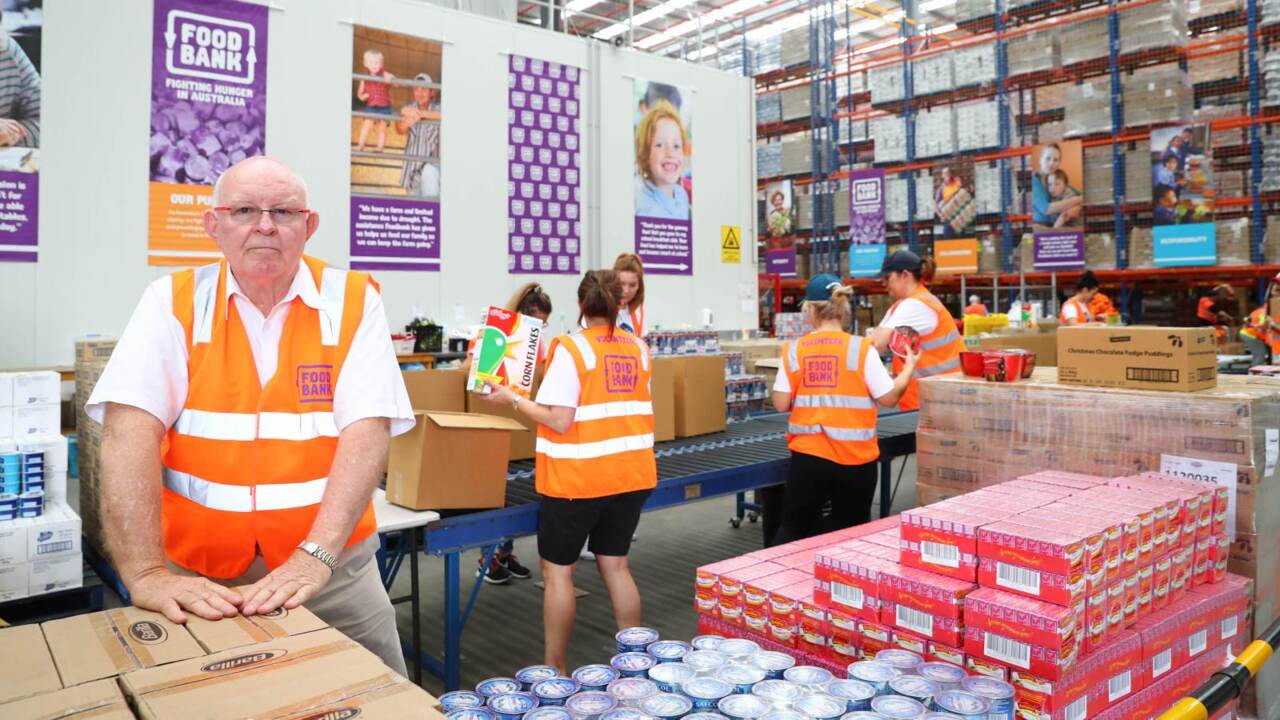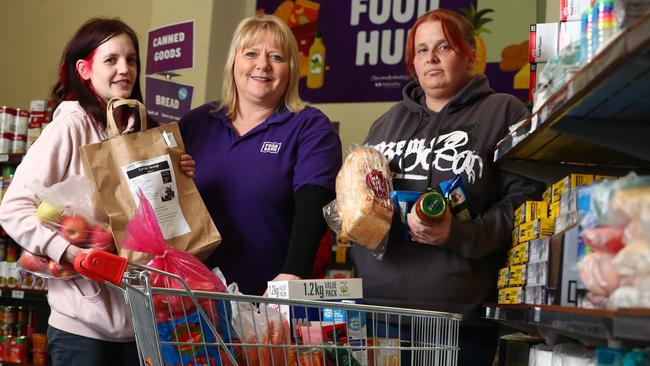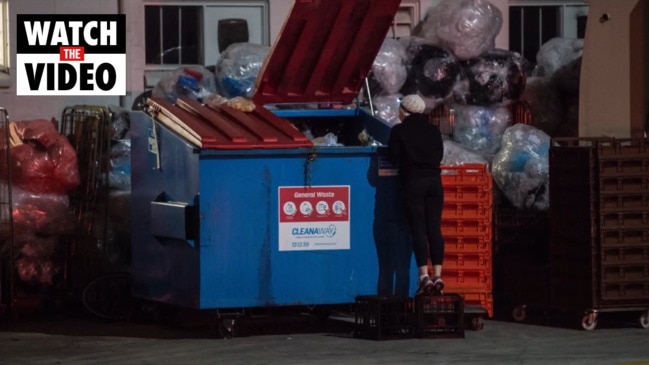Every month in SA, 117,260 people are seeking emergency food relief
AN additional 60,000 South Australians each month — 40,000 of them children — are going hungry compared to three years ago, the 2018 Foodbank Hunger Report released today reveals.

- Dumpster divers driven by rising living costs
- Is SA suffering unprecedented poverty compassion fatigue?
- SA charities screaming out for donated food
THE number of South Australians surviving on food handouts has surged to more than 117,000 every month — more than doubling in the past four years.
The 2018 Foodbank Hunger Report released today shows 117,260 people in SA — 40,000 of them children — are regularly seeking emergency food relief help from not-for-profit Foodbank SA and its more than 500 associated charities.
The new data reveals almost 60,000 more each month are going hungry compared to 2015 figures (see breakout box).
Hardest hit, says the report, is regional and remote South Australia where demand in some areas has doubled and is expected to worsen should the impact of the drought intensify.
The rise in need, says Foodbank SA, is evidenced in the 6000 South Australians the NGO had to turn away in the last 12 months and warns the state government to take heed of the “growing problem” of food insecurity.
Foodbank SA chief executive officer Greg Pattinson said the situation was “a sad reality” that is becoming worse.
“Hunger in the country is an urgent issue that can’t be ignored,” Mr Pattinson said.
“People living in regional and remote areas are 33 per cent more likely to experience food insecurity than those living in cities.”
Mr Pattinson said even with extra donated food, the current trend in SA demand could not be met with existing resources.

The Sunday Mail in July reported Foodbank SA needed $4 million in logistics and transport infrastructure connecting charities with food producers and retailers to keep up with demand.
Foodbank SA regional branch manager Lynne Neshoda said the Mt Gambier warehouse and food hub had provided those in need with 152,000kg of donated food in 2017/18 compared to 75,000kg the previous year.
“It’s not just the unemployed and pensioners who are needing help, it’s low income families too who are struggling to make ends meet.”
She said high unemployment in regional SA, job insecurity and low incomes coupled with increasing living and utility costs and the added pressure of transport and health costs due to distance meant more people were going hungry.
“Parents are going without food to feed their children and many more are skipping meals.”
The South Australian Council of Social Service says it’s not surprised by the growth in demand for food relief services.
“It is shocking and unfortunate that people’s incomes have not kept pace with increasing costs of essentials, such as housing, electricity and other basics,” acting SACOSS ceo, Dr Catherine Earl, said.
“People are being forced to make impossible decisions about paying rent and electricity bills or putting food on the table,” she said.

Anti-Poverty Network SA spokesman Pas Forgione described the current situation in SA as a “perfect storm of factors” increasing hardship.
“For many in our community, casual, insecure, or part-time work has become the norm, leaving people with irregular, unstable, or too few hours to cope with skyrocketing housing and energy prices.
“Many in paid work have seen their wages stagnate for the past few years, meaning that every year, there is greater and greater stress on their budget.”
The Anti-Poverty Network and SACOSS are lobbying the federal and state governments for an increase to the Newstart allowance.
“For the unemployed in particular, relying on the Newstart Allowance that is $160 per week below the poverty-line, means stories of dumpster-diving, skipping meals, or going without to prioritise kids or pets, are becoming more and more common,” Mr Forgione said.
Human Services Minister Michelle Lensink said the state government had provided the state’s food relief sector with more than $800,000 in funding over the past three years for its “invaluable work providing people who may be experiencing crisis with access to emergency food relief”.
She said Foodbank would receive $440,000 over the next two years, with an additional $60,000 for a FoodHub in Port Pirie.
Last year, she said, Foodbank received $100,000 for a mobile food pantry as part of grants and agreements of up to almost $1 million over three years.
HUNGER PAINS
Number of South Australians suffering food insecurity/month:
2018 — 117,260 (up 14% from previous year)
2017 — 102,718 (up 21%)
2016 — 84,847 (up 47%)
2015 — 57,680
2015 — 2018 — increase from 57,680 to 117,260 (up 103 % or 59,580 more people)
Source: Foodbank Hunger reports
Tent hand-out to homeless youth ‘unacceptable’
REGIONAL South Australia is suffering a spike in homelessness in recent months with latest reports of young people being handed tents and swags in Mt Gambier for lack of emergency accommodation.
“This situation is unacceptable and must be remedied as a matter of urgency,” Shelter SA executive director Dr Alice Clark said.
“Recently in Mount Gambier the Shelter SA team was shocked to hear that young people, in need of somewhere safe to sleep, are being handed tents.
“There is a critical lack of crisis accommodation for anyone in the region who finds themselves without a roof over their head.”
Dr Clark said Mt Gambier was not isolated, with Shelter SA workshops in Gawler and Victor Harbor as recently as last month revealing more than 220 men, women and children are sleeping rough each night across both regional centres.
She said families and singles were sleeping in streets, cars, on park benches and along river banks every night.
“There’s no emergency accommodation in regional areas,” she added.
“With the demise of our public housing system, the gap between what people can afford to pay and the cost of private rental is getting wider and home ownership is simply out of reach.”
Next week marks International Poverty Day — designated October 17 by the United Nations - to raise global awareness and redress disadvantage.
South Australian social welfare, community and religious groups will be holding various events from today until October 20.
For more info visit www.antipovertyweek.org.au.
